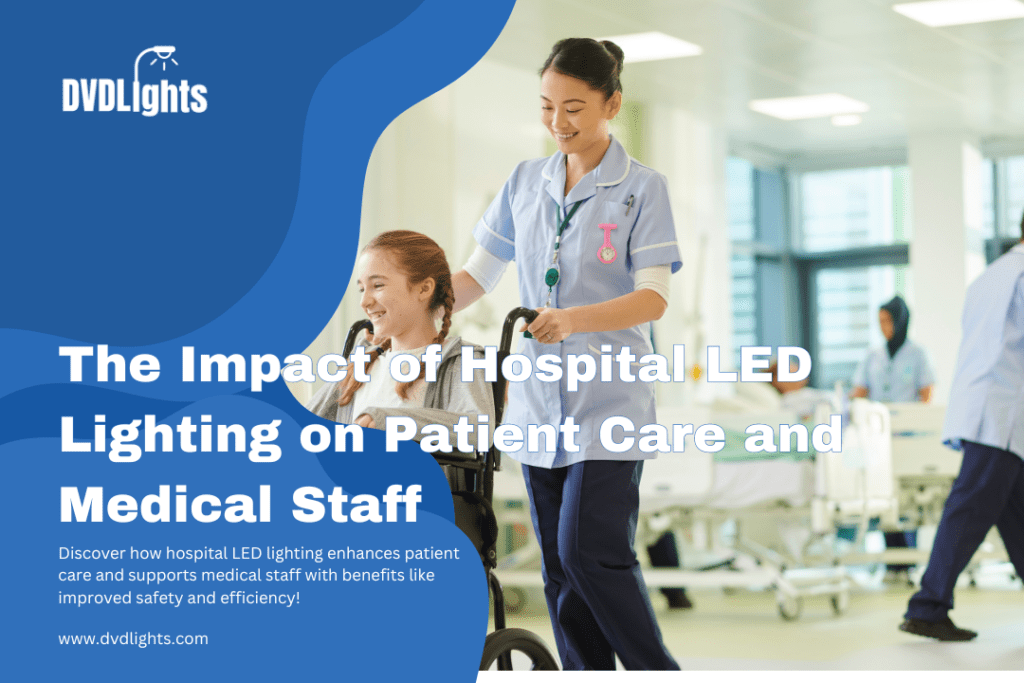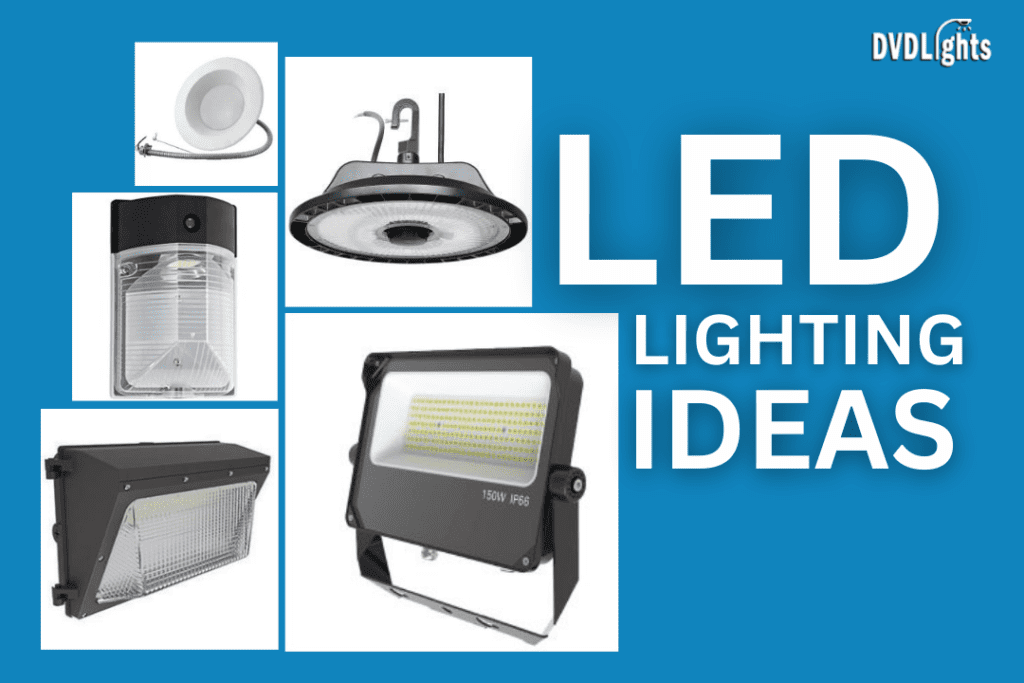Lighting is one of the most critical factors in health care environments, with impacts on both patients and working conditions for the medical staff. The introduction of LED technology transformed hospital lighting due to the numerous advantages that would become a general improvement in health care. This article explains how hospital LED lighting improves care for patients and supports medical staff in the quest to render health care facilities more efficient, secure, and comfortable.
The Importance of Lighting in Hospitals

Before considering the specific benefits of LED lighting, it’s appropriate to identify why lighting in general inside hospitals is important. There are several reasons good lighting is so important: It provides patient safety – preventing various types of accidents, most notably falls, and good lighting tends to comfort patients, calming their anxiety and making them feel better and more inclined to heal.
Medical Accuracy:
Healthcare professionals need accurate lighting to diagnose correctly and to treat their patients accordingly. Inadequate lighting may lead to misdiagnosis or wrong procedures, eventually adversely affecting the patient’s outcome.
Staff Efficiency:
Better visibility and reduced eye strain improve the productivity and well-being of medical staff.
How LED Lighting in Hospitals Benefits Patient Care

Improved Healing Environment
Perhaps the most significant benefit regarding hospital LED lighting is the fact that it offers a therapeutic friendly environment. Multiple studies have experimentally demonstrated the influence the illumination has on the recovery rate of patients. The LED lighting can be easily adjusted to simulate this type of natural light and thus has several advantages associated with it, including:
Regulating Body Circadian Rhythms:
The ideal lighting allows the body to regulate circadian rhythms, which influence quality sleep and an overall healthy body. This is made possible by the LED lights’ ability to simulate daylight and thus assist in the biological clock of the patients.
Mood Enhancement:
Naturally, or otherwise, the artificial equivalent of natural light can make one’s mood much better and decrease depressive symptoms, which is very useful in a hospital environment where some patients may be prone to anxiety or sadness.
Improved Safety of Patients
LED lighting enhances patient safety in the following ways:
Low Glare, Better Visibility:
LEDs cause very low levels of glare and illuminate brightly, but uniformly, which reduces the chance of accidents due to poor visibility. Better visibility can also help patients see more clearly and move about safely.
Emergency Preparedness:
LED lighting can also be designed to interface with emergency systems to ensure they stay on at much lower levels of light during power failures—this enhances safety for patients and staff.
Better Diagnostic and Treatment Outcomes
The quality of lighting influences diagnosis and treatment more than anything else,
Better Color Rendering:
Due to the much better color rendering offered by LED lighting compared to traditional ones, doctors and experts are made to differentiate even the minutest color differences between tissues and fluids, thereby improving diagnosis.
Accuracy in Treatments:
The bright and concentrated lighting provided by LEDs in an operating room or other medical procedures is important in reducing the scope for errors and increasing the chances of recovering patients.
Energy Efficiency and Cost Savings
The lighting provided by LEDs is highly energy-efficient, producing cost savings that benefit the environment, too. These include: low energy consumption and reduced operating costs, since LED lights use much less energy than either incandescent or fluorescent lamps. This effectively reduces energy bills for a hospital, hence making the resources available for the care of their patients.
Longer Lifespan:
The life of LED lights is much longer. This diminishes the replacement frequency and, connected with it, the maintenance costs. This guarantees there will be continued and reliable light in these areas.
Benefits of Hospital LED Lighting for Medical Staff

Improved Working Conditions
The well-being and effectiveness of medical staff are very important in a medical setting. LED lighting supports these goals in several ways:
Reduced Eye Strain:
High quality LED lighting reduces the stress and fatigue in the eyes, especially during long shifts. This improvement enhances staff comfort and productivity.
Better Concentration:
Good and even illumination assists in keeping a doctor alert and focused on the task at hand. This becomes extremely vital in critical high-stress environments such as emergency wards and ICU wards.
Better Visual Acuity
Medical procedures, beginning from routine checkups to intricate surgery, require precision:
Better Illumination:
LED lights illuminate the working area brightly and uniformly without a flicker. This is significant for detailed tasks that require sharp vision.
Task Lighting:
It is feasible to engineer LEDs to provide variable task lighting, thereby ensuring adequate light at the correct places of operation of medical professionals to reduce any chances of error.
Flexibility and Control
The flexibility provided by LED lighting systems has not been paralleled by any system hitherto and allows customization to suit :
The LEDs can easily be adjusted in brightness and color temperature to suit different tasks and times of the day. This allows for creating the best conditions in which many medical procedures can be carried out.
Automated Controls:
Advanced LED systems can have automatic controls integrated, which allow dynamic adjustment in intensity depending on the time of the day or other requirements. This provides enhanced convenience and efficiency.
Contribution to a Sustainable Environment
Sustainability in healthcare is gaining a stronger foothold, and LED lighting helps accomplish that in the following ways:
Energy Savings:
The inherent energy efficiency of LEDs lowers hospitals’ carbon footprint and offers a contribution to environmental sustainability.
Reduced Heat Emission:
The fact that LEDs generate less heat than traditional lighting methods decreases the load on air conditioning systems and saves additional energy.
Making a Case for Implementation of LED Lighting in Hospitals
In order to have LED lighting installed in any hospital, several measures are needed to ensure that maximum benefits are accrued through this change. These include assessment and planning.
Lighting Audit:
A thorough Lighting Audit would afford the opportunity to discover the places where LED lighting would be better off.
Needs Analysis:
Accurate selection of the needs in the different hospital areas will enable the selection and delivery of proper LED solutions
Installation and Integration
Professional Installation:
Proper installation by experienced professionals can be a promise that the LED lighting is mounted properly and safely.
System Integration:
The integration of LED lighting with already installed systems, such as emergency lighting and automation controls, allows for efficiency and functionality.
Staff Training and Maintenance
Training Programs:
The staff will be educated with regard to the advantages and functioning of LED lighting so they are able to use this new system.
Regular Maintenance:
While the maintenance requirements of an LED system are far fewer, regular checks ensure that the installation continues performing at the best level and life expectancy is maximized.
Case Studies and Examples in Real Life
Epworth Hospital
To guarantee the highest quality of lighting outcomes, superior LED lights were meticulously selected. Preliminary installations of particular products were conducted in carefully chosen locations, permitting hospital personnel to acquaint themselves with the enhanced lighting setup prior to the comprehensive implementation of new LED tubes.
Highly skilled electricians devised an exhaustive project blueprint through close collaboration with the local staff to mitigate the disruption of installation procedures on both personnel and patients. This involved meticulously synchronized time management to facilitate the replacement of tubes in individual rooms during the brief intervals when these spaces were vacant.
University of Utah
The University of Utah Hospital is renowned for its cutting-edge medical practices, exemplary patient care, and distinguished medical education. Amid the myriad critical issues that a hospital contends with daily, why should lighting be a priority? The elevated ceilings and difficult-to-access lighting fixtures have escalated maintenance costs significantly. Each of the 85 lighting fixtures utilized dual 32-watt 4-pin compact fluorescent lamps (CFLs), leading to substantial energy consumption and uneven, patchy illumination. Given that the hospital functions continuously, 24 hours a day, seven days a week, there is a pressing need for a lighting solution that can alleviate the ongoing challenges of maintenance and high energy demands.
Hinchingbrooke Hospital
The quality of illumination throughout the building has been significantly enhanced. Previously, the fittings provided a low color temperature and poor light distribution, resulting in shadowing and a dull level of illumination that created an unpleasant environment for patients.
The upgrade has led to a brighter and more comfortable experience for patients, with higher light output and improved color temperature in the reception areas and entrance.
Conclusion
LED lights in hospitals hold many advantages that make them outstandingly beneficial to patient health and assists the staff in taking proper medical care. By providing a healing environment, enhanced safety, accurate diagnosis and treatment, the LED light is a gateway to improved patients’ outcomes. There are also advantages to medical personnel through a better working environment, visual accuracy, and efficiency. Energy efficiency and cost savings achieved through LED lighting ensure sustainability in healthcare establishments. With the increasing concern towards providing better care to the patient and operational efficiency in hospitals, the implementation of LED lighting is one of those necessary steps towards these goals.
LED lighting in hospitals does not benefit just the patients and staff; it also serves broader environmental and economic objectives. Of all the many innovations currently occurring within the health sector, perhaps LED lighting is preeminent in underpinning a brighter, healthier future for all.





